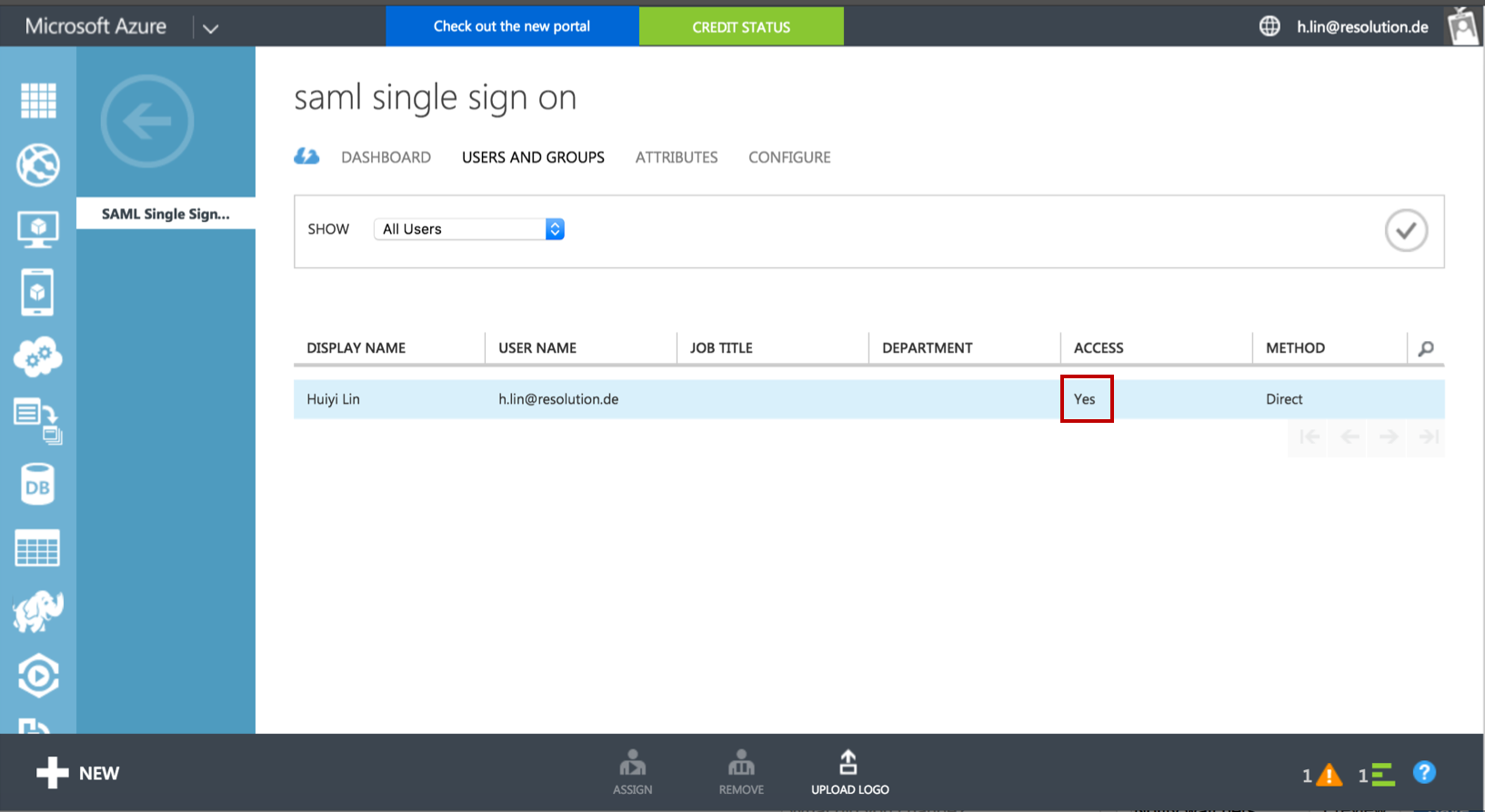Important Update Effective February 1, 2024!
Due to recent changes in Jira and Confluence, we've made the tough decision to discontinue the OpenID Connect (OIDC)/OAuth app and no longer provide new versions for the newest Jira/Confluence releases as of January 31, 2024.
This is due to some necessary components no longer shipping with Jira/Confluence, which would require some extensive rewrites of the OIDC App.
Important Update! This app will be discontinued soon!
Due to recent changes in Jira, which no longer ships with some components required for our Read Receipts app to run, we've made the tough decision to discontinue the app, as of Februar 5, 2025.
Important Update! This app will be discontinued soon!
We've made the tough business decision to discontinue the app, as of January 11, 2025.
Setup SAML SSO with Azure AD (Bamboo)
Our SAML Single Sign On for Bamboo is now officially listed on Azure AD gallery.
Now customers who purchased our plugin can also use it with the Free Edition of Azure AD. Check out more detailed information here.
Check out our Plugin and Setup Guide in Azure AD Gallery:
SAML SSO for Bamboo by resolution GmbH
Step-by-Step Setup Guides to setup our SAML plugin for Bamboo with Azure AD
This guide describes how to complete the initial setup for Bamboo Single Sign On Azure AD, applicable from plugin version 2.0.4. If you need any further support please feel free to contact us here.
| Step 1: Install the plugin | Step 2: Setup the Azure AD (Substep A-D) | Step 4: Test | Step 5: Enable login redirection |
|---|
Prerequisites
Azure Active Directory Premium
If you already have an Azure AD account, but are not sure if your premium account is enabledclick me to find out.After signed in to your Azure AD account, click on Active Directory and choose the directory you want to use with SAML Single Sign On. After your chosen directory opened up, click on Licences on the right side. Then, under the Licence Plans you will see the licence type you have - Microsoft Azure Active Directory Premium, if it is enabled. Otherwise, see video provided above to enable it.
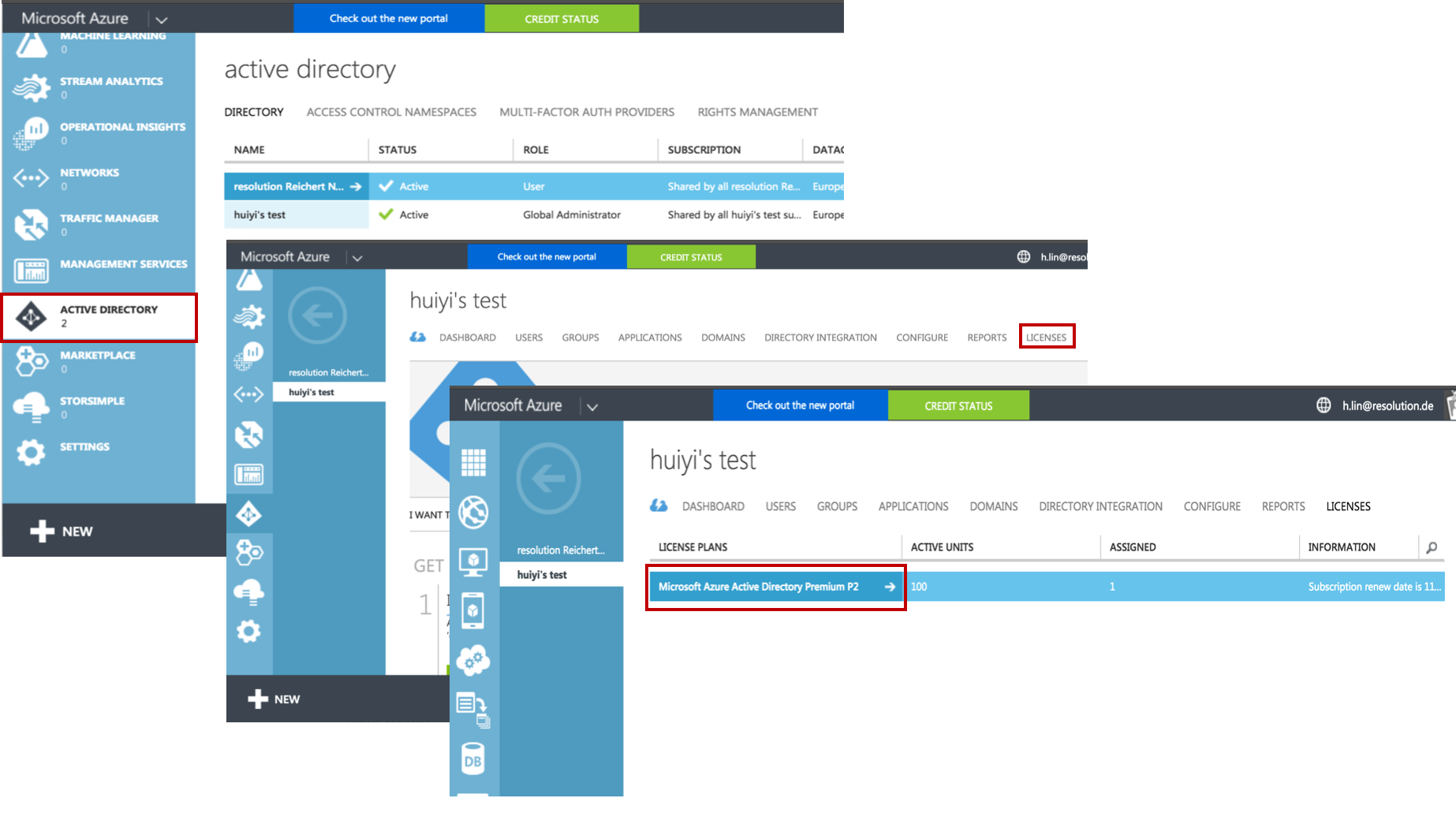
If your Azure premium account is not yet enabled, find out how to enable Azure Active Directory Premium trial here.
Bitbucket must be accessible via HTTPS.
See https://confluence.atlassian.com/bitbucketserver/securing-bitbucket-server-with-tomcat-using-ssl-776640127.html for instructions. This is necessary because Azure AD accepts only HTTPS-URLs for SAML endpoints.
Step 1: Install the Add-on
Click Add-ons under Bamboo Administration on the top right corner of your Bamboo interface. Then, choose Find new add-ons and you will be taken to Atlassian Marketplace. Search for SAML SSO and click on Free Trial to install.
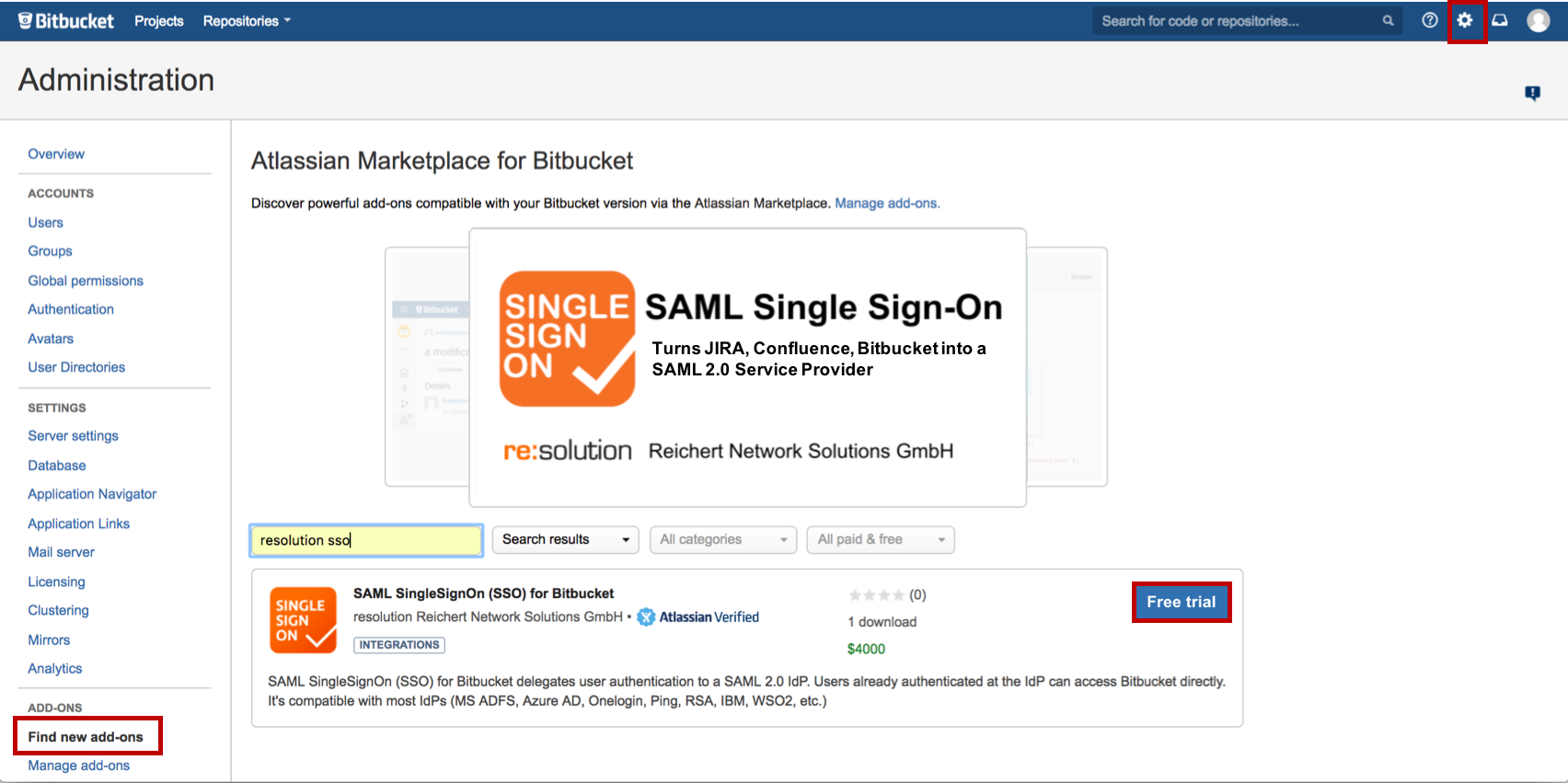
After installing free trial, click on Manage, then choose Configure. Now, you are on the plugin configuration page.
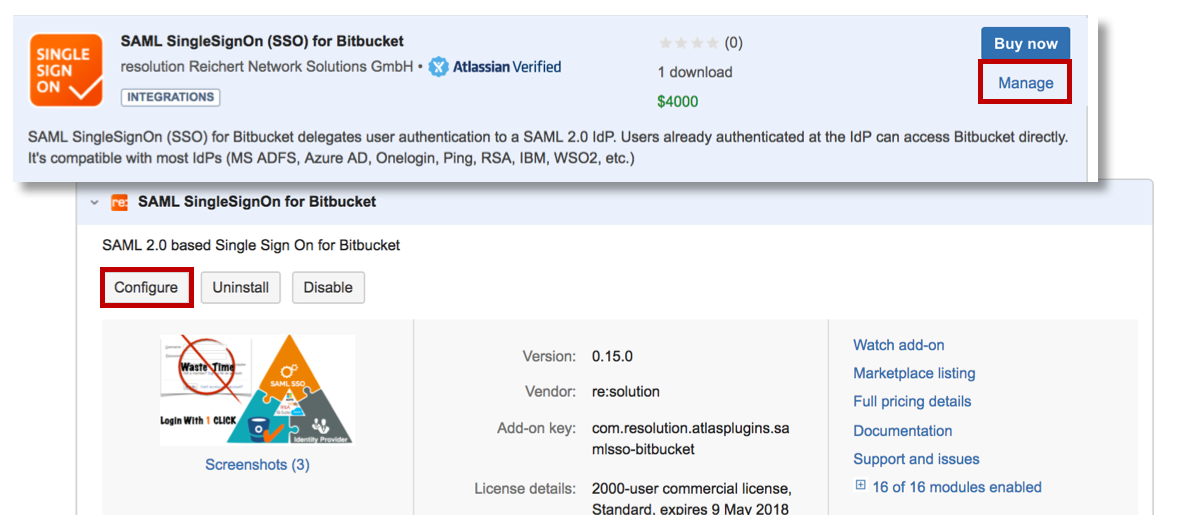
Step 2: Setup the Azure AD
Step 2 will be completed in Azure AD.
Substep A : Select your directory and start application dialog
- Go to https://manage.windowsazure.com and login with your credentials.
- Select Active Directory on the left navigation panel, and select the directory that you want to use with SAML Single Sign On.
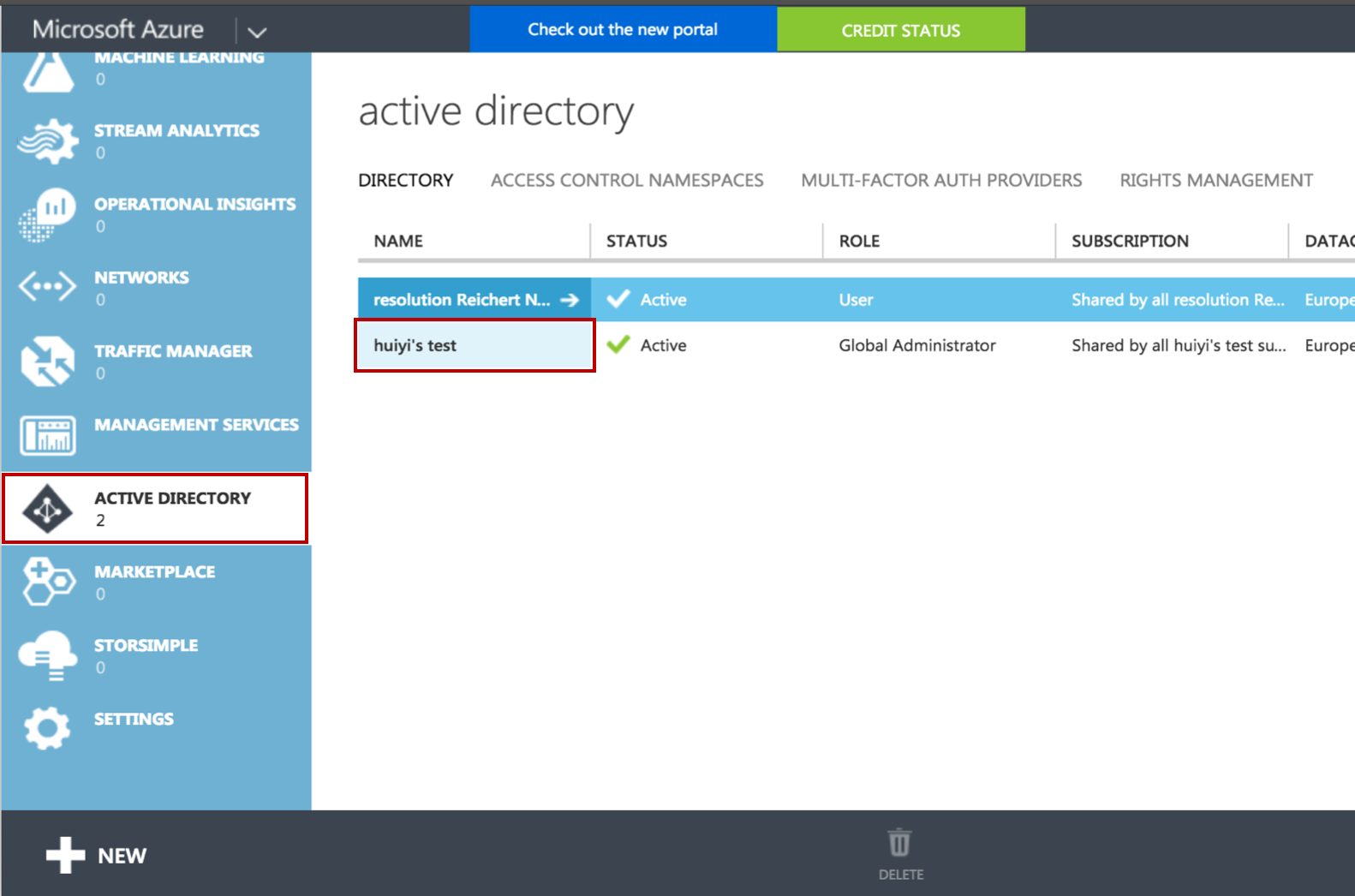
- Click on APPLICATIONS, then click on ADD to start a new application dialogue
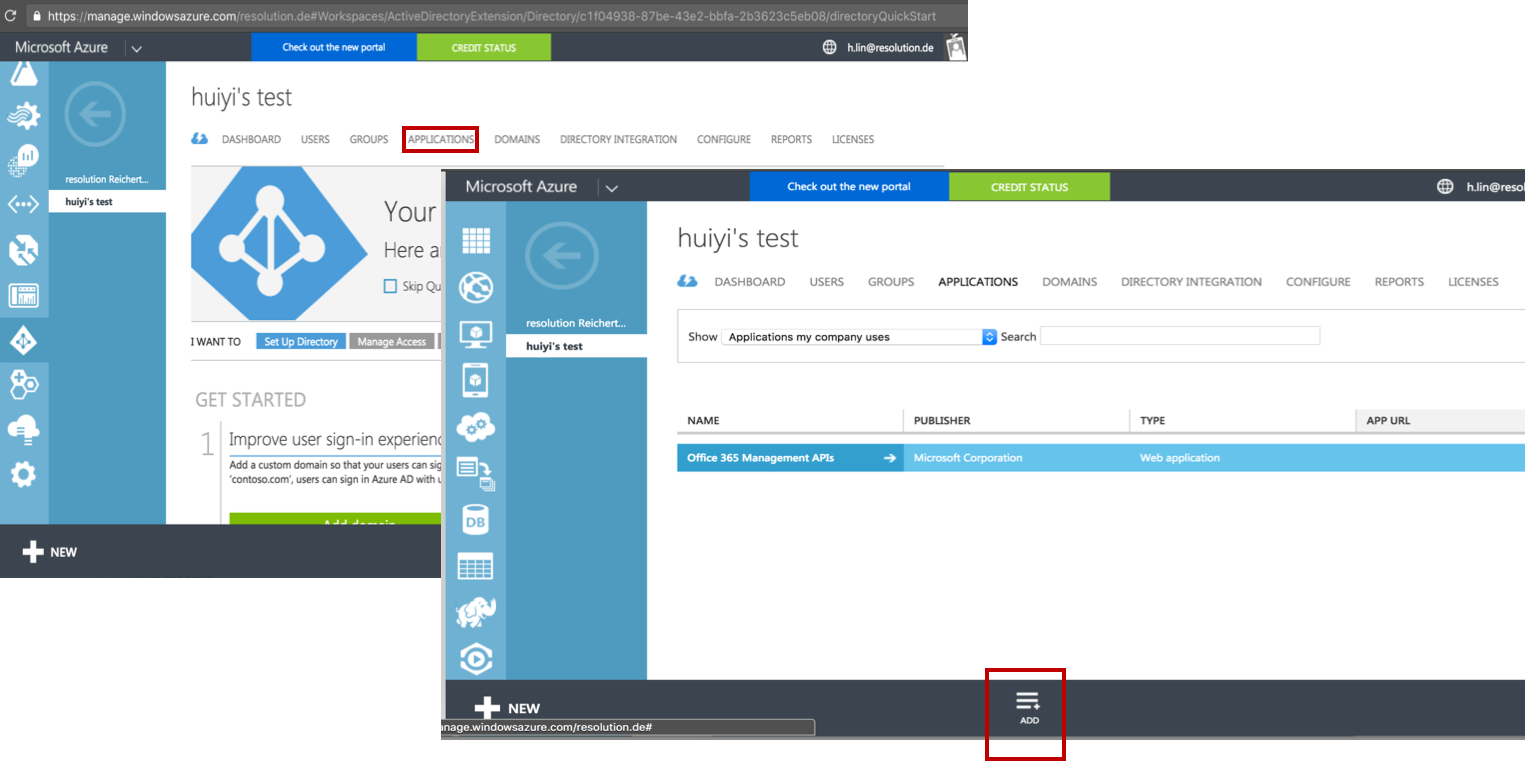
Substep B: Add a new application
- Click on Add an application from the gallery.
- Select Custom on the left navigation panel, and click Add an unlisted application my organization is using.
- Then, fill in a name of your choice, e.g.. SAML Single Sign On in the NAME field.
- Click on the Finish button at the bottom to add the application to your directory.
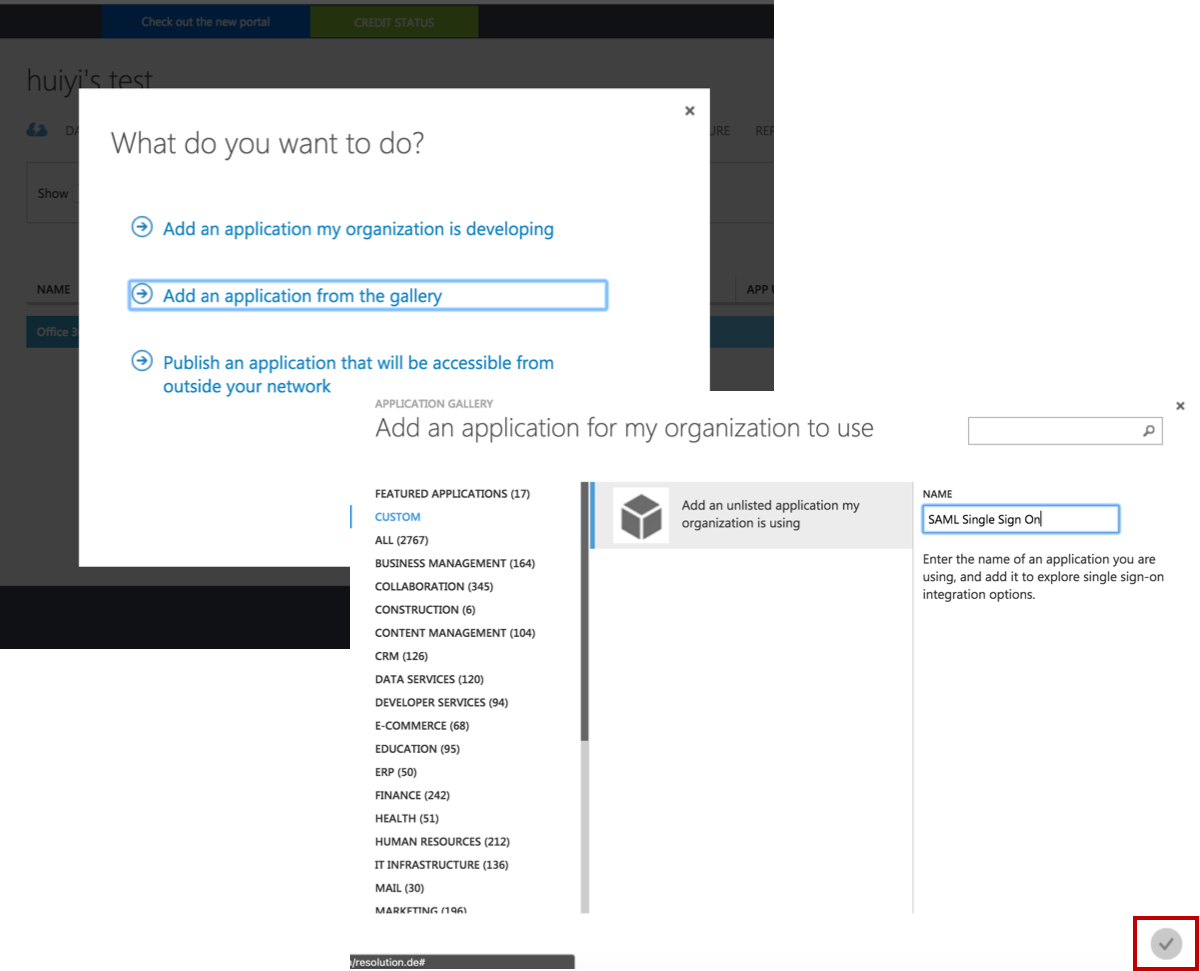
Substep C: Configure the new application
- Click on Configure Single Sign On. In the Pop-up window choose select Microsoft Azure AD Single Sign-On, then click on Next.
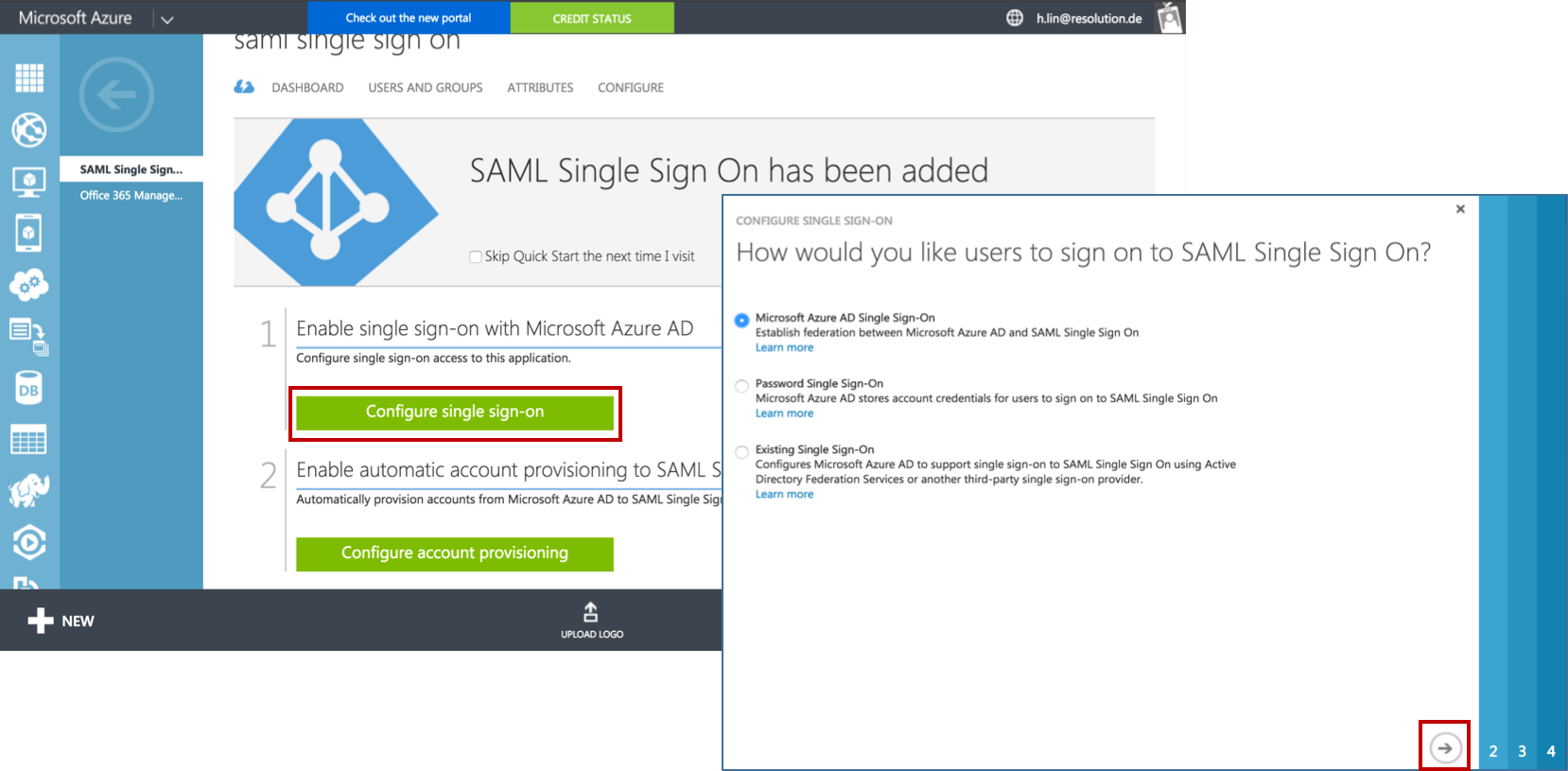
- In the IDENTIFIER and REPLY URL fields please fill in your Bitbucket SAML Single Sign On URL :
https://<your-bitbucket>/plugins/servlet/samlsso. (e.g. https://bitbucket.lab.resolution.de/plugins/servlet/samlsso) - Click Next.

- Click on Download Metadata (XML) to download the FederationMetadata.xml. We will configure the SAML Single Sign On with the Metadata from Azure AD in Step F.
- Check the Checkbox Confirm that you have configured... .
- Click on Next.
- Fill in a NOTIFICATION E-MAIL for which you want to get notifications for this application.
- Click Finish to complete the application configuration. Then you come back to the overview page of SAML Single Sign On and continue with Substep D to grant user access.
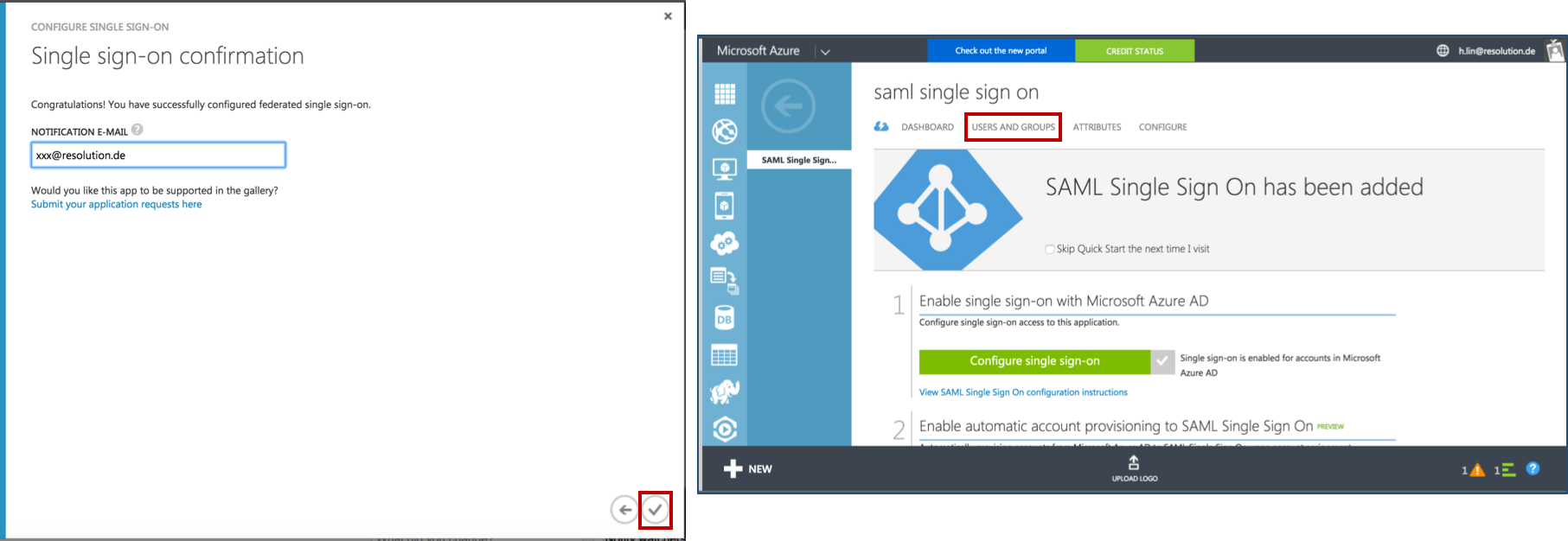
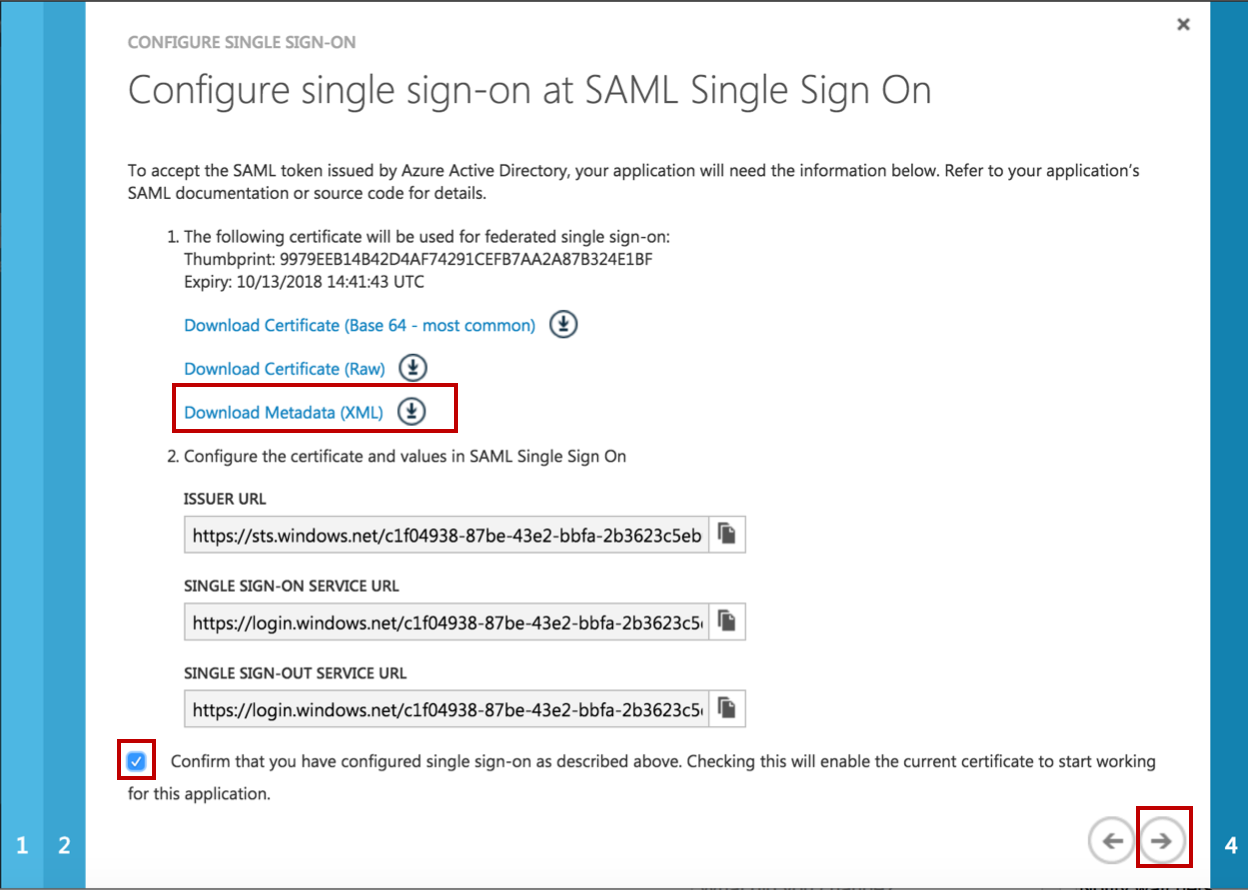
Substep D: Grant access to users
- Click on USERS AND GROUPS and select All Users in the SHOW drop down field. Then click on the tick on the right side to show all users.
- Select the user which you want to grant access for this application, and click on ASSIGN at the bottom.
- Then, click on YES at the bottom of the black pop-up window to confirm to enable access for selected users.
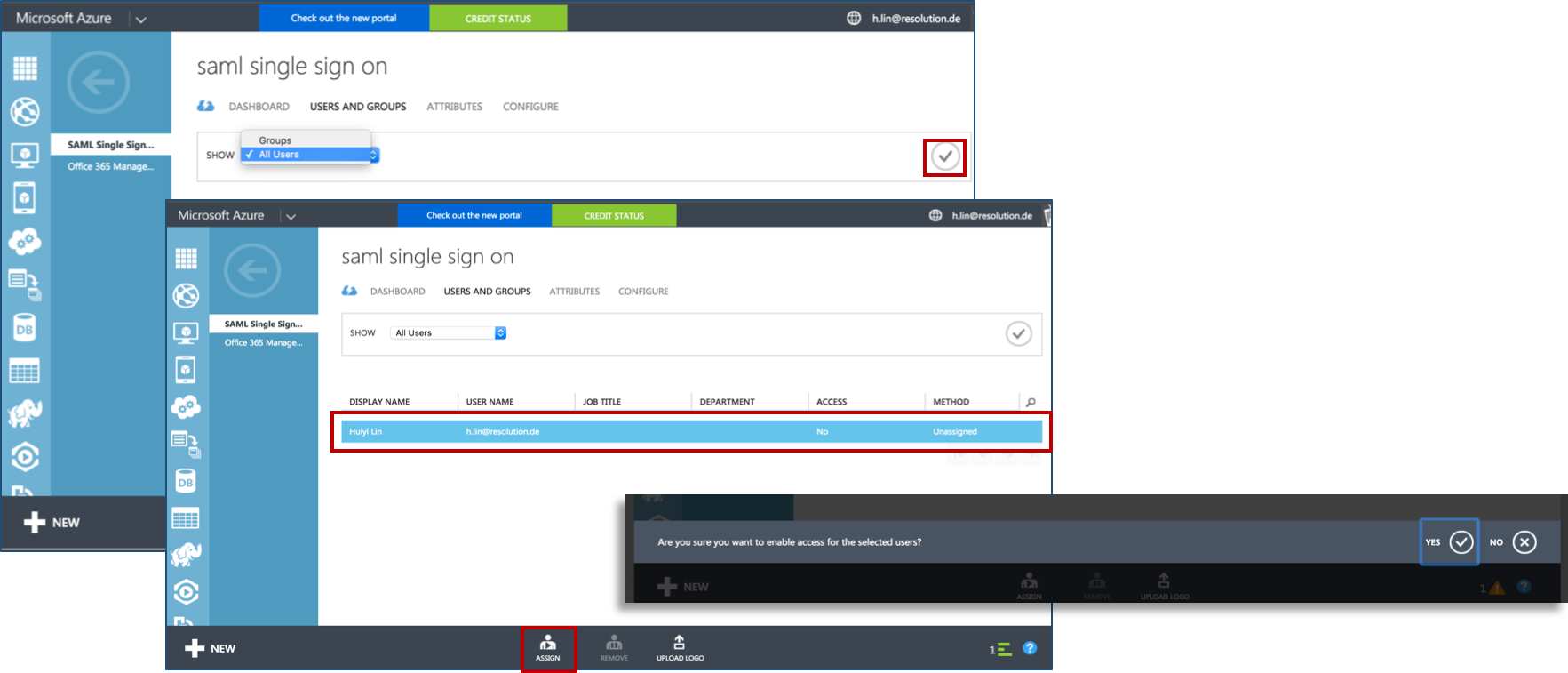
- Finally, review “Access” status to see if the user has been successfully granted access to application now.
Step 3: Configure the Add-on
- To continue Step 3, please go back to the plugin configuration page opened in Step 1.
Substep A: Add new IdP or import config
Since Version 2.0.4, our Add-on offers an intuitive configuration wizard that is presented on first start. In the first step it's possible to import an existing configuration or to start with a fresh configuration. Click on Add new IdP to start the wizard.
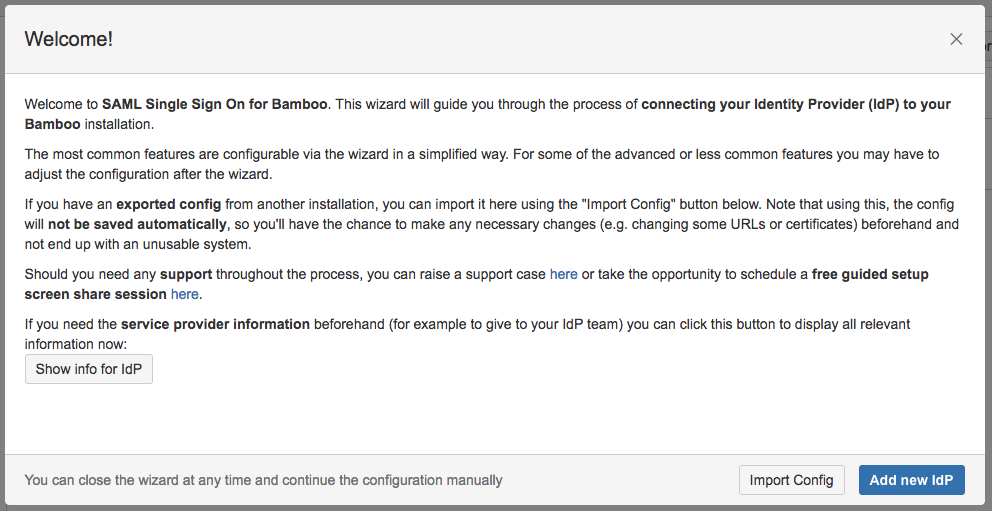
Substep B: Choose your SAML Identity Provider
Select Azure AD as IdP Type and click on Next.
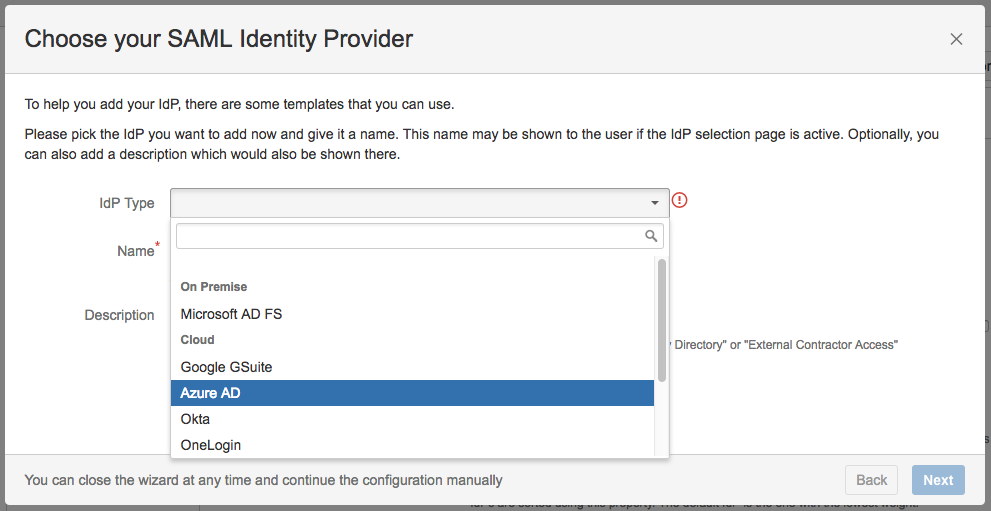
Substep C: Identity Provider Configuration
Since you have done the configuration of Azure AD in Step 2 of this tutorial you can skip this step by clicking on Next.
Substep D: Import SAML IdP Metadata
Paste the XML metadata from Azure AD to the input field or load the XML metadata from a file on your computer.
- Click on Import.
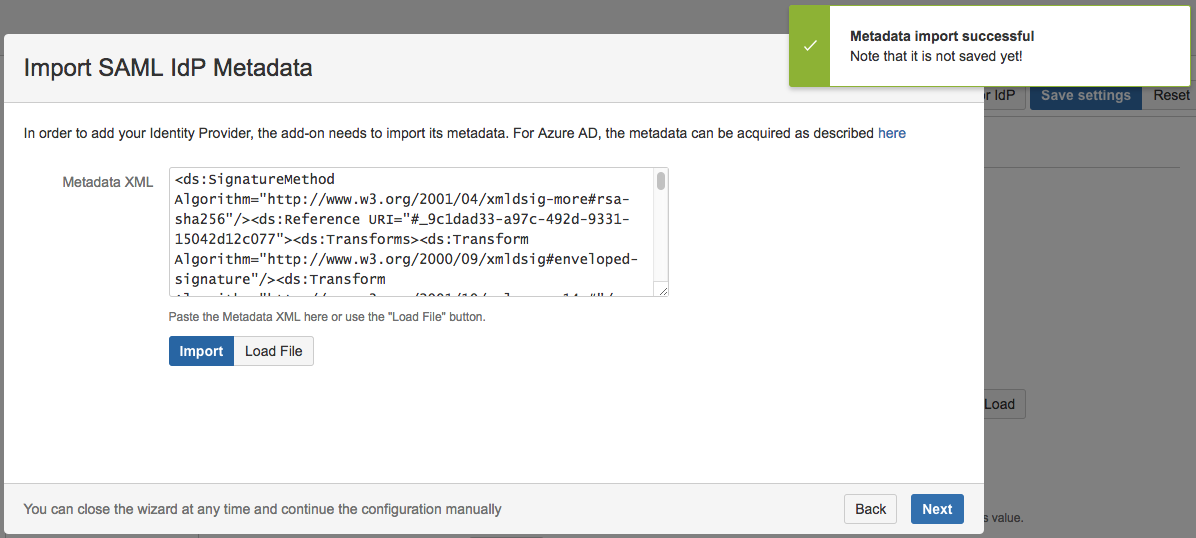
Substep E: User ID attribute and transformation
It's recommended to leave this option checked as we will later configure the AD FS to use the Name ID attribute. Simply click on Next.
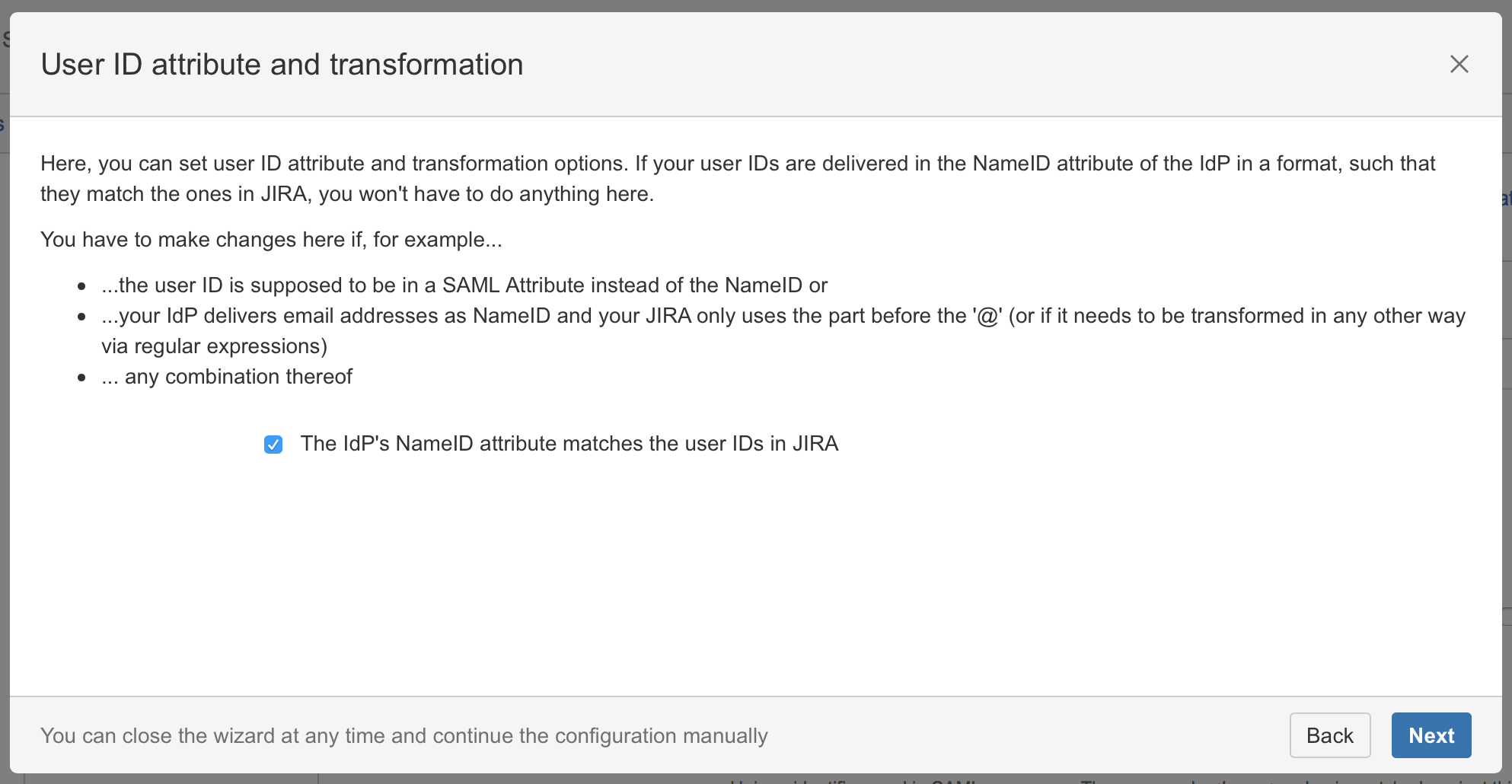
Unlike SAML SingleSignOn for JIRA, Confluence and Bitbucket, SAML SingleSignOn for Bamboo is currently not able to create and update users or assign groups on login. This functionality will be eventually added in a future release.
Step 4: Test
You are now able to perform a test with an authentication tracker, to see if your configuration is working as intended. To start the test, click on the Start test button, copy the displayed link, paste it into a new incognito / private browsing window, and execute a login with Identity Provider. The status of the authentication process is permanently update in the wizard.
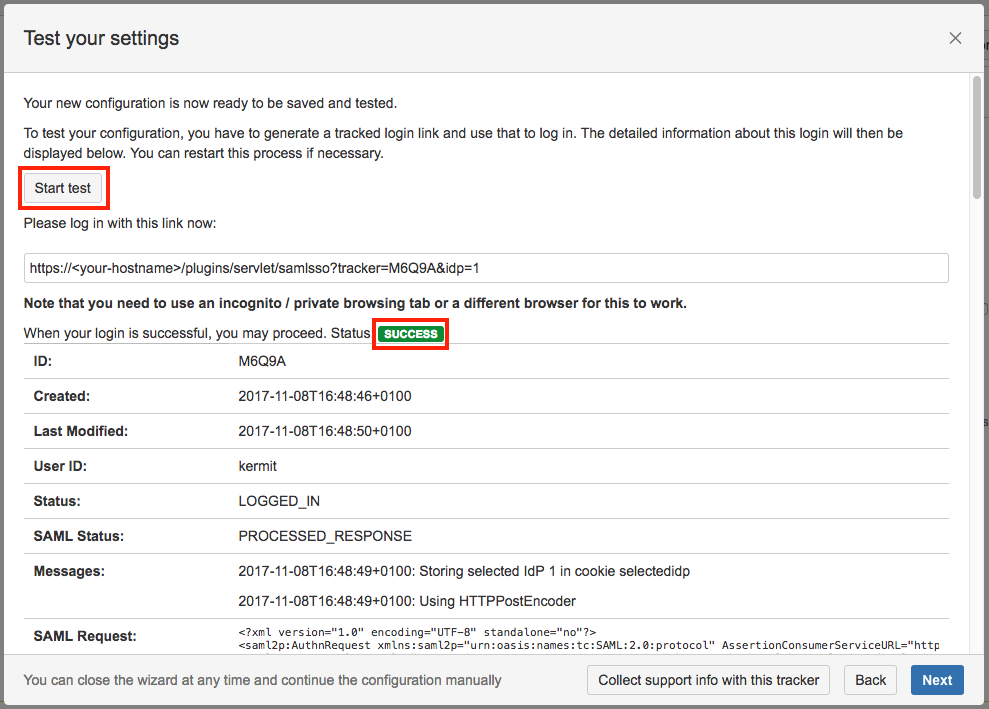
Step 5: Enable login redirection
If the authentication test was successful, it is now safe to activate the redirection on login.
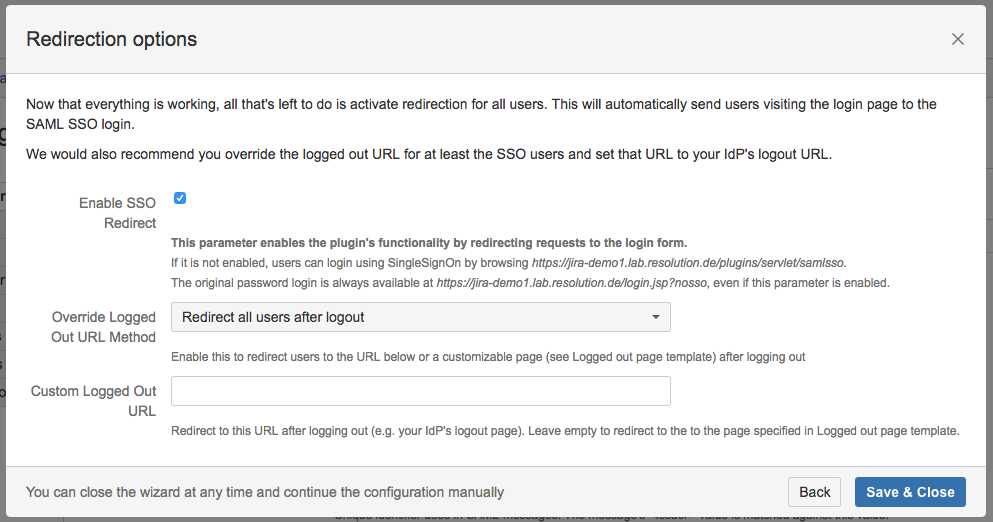
Click on Save & Close. The Add-on is now configured and ready to use.
If Enable SSO Redirect is enabled, you can login to Bamboo manually by browsing https://<your-bamboo>/userlogin!doDefault.action?nosso (in Bamboo 5: https://<your-bamboo>/userlogin!default.action?nosso). Use this URL if you need to login a local user unknown to the Azure AD or if there are any issues with Single Sign On.
You might also find following documentation helpful:

